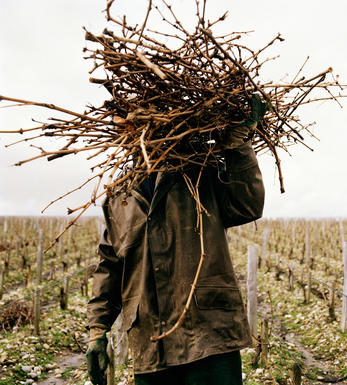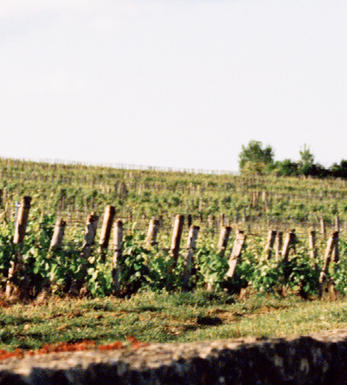
2019 Vosne Romanee Trés, Vieilles Vignes Domaine Dugat-Py, Burgundy

About this WINE

Dugat-Py
Dugat-Py is a high class Gevrey-Chambertin Domaine that has risen to prominence in the last 10 years. It was run for many years by Pierre Dugat and, astonishingly, only began estate bottling in 1989. It is now run by Pierre's son Bernard, who is recognised as one of the shrewdest winemakers on the Côte. The Domaine consists of 5 hectares of vineyards and includes holdings in several Premiers Crus sites and 3 Grands Crus. Bernard Dugat-Py, wife Joscelyne and son Loïc, are based at the Aulmônerie, whose cellars were constructed in the 12th century to store wine for the Abbey of St Benigné in Dijon. With rapturous praise emanating especially from across the Atlantic, this is perhaps even more of a cult domaine than that of Bernard’s cousin Claude Dugat. I was a little sceptical, having tasted some wines at then years old which seemed to have dried out, making me fear over extraction. However a visit to the domaine in November 2009 changed my thinking.
The key to the success is in the vineyard with exceptionally meticulous control of the work, there being five people working full time on 10 hectares. The vines are for the most part extremely old, averaging 65 years old across the domaine, and all the trimming is done by hand, while a horse is used to plough a few of the vineyards. Replanting is done with selections from their own vine stock, never with clones. The domaine has been fully organic since 2003 while son Loïc has been doing some biodynamic work with consultant Paul Masson. The wines are vinified with as little intervention as possible and are bottled unfined and unfiltered. "I don't like opulent wines; I like elegant wines", says Dugat. Consequently, the wines are concentrated, yet extremely stylish and well balanced. The wines are very approachable in youth but show at their best with 5-8 years of bottle ageing.
Contrary to some practitioners of deep-coloured wines in Gevrey-Chambertin, the grapes are picked relatively early. Stems are usually kept, depending on the vintage, though to a lesser degree for the Charmes-Chambertin whose primary fruit would be masked by the stalks. There is no cool pre-maceration, except whatever may happen naturally, one punch down and one pump over per day during fermentation in cement and wooden vats, and temperatures are not maintained after the fermentation is over. All in all, it is a low intervention regime. The wines are then matured in François Frères barrel, all new from the premiers crus upwards.
Recent expansion into the Côte de Beaune has seen the addition of Pommard and some white wines from Meursault and Chassagne-Montrachet.
Jasper Morris MW, Burgundy Wine Director and author of the award-winning Inside Burgundy comprehensive handbook.

Vosne-Romanée
The small commune of Vosne-Romanée is the Côte de Nuits’ brightest star, producing the finest and most expensive Pinot Noir wines in the world.. Its wines have an extraordinary intensity of fruit which manages to combine power and finesse more magically than in any other part of the Côte d’Or. The best examples balance extraordinary depth and richness with elegance and breeding.
Situated just north of Nuits-St Georges, Vosne-Romanée boasts eight Grand Cru vineyards, three of which include the suffix Romanée, to which the village of Vosne appended its name in 1866. The famous La Romanée vineyard was formerly known as Le Cloux but was renamed in 1651, presumably after the Roman remains found nearby. In 1760 the property was bought by Prince de Conti, and subsequently became known as Romanée-Conti.Vosne is the home of the phenomenally fine wines of Domaine de la Romanée-Conti; divine wines that are, as they say, not for everyone but for those who can afford them. The region also boasts some of the world’s most talented, quality-conscious and pioneering producers: Domaine de la Romanée-Conti of course, but also Henri Jayer, Lalou Bize-Leroy, René Engel, as well as the Grivot and Gros families, to name but a few.
Vosne-Romanée has the greatest concentration of top vineyards in the Côte d’Or, including the tiny Grand Crus of the astonishing La Romanée-Conti (a monopoly of Domaine de la Romanée-Conti producing about 600 cases a year), the classy, complex La Romanée (a monopoly of Vicomte Liger-Belair, but until 2002 bottled under Bouchard Père et Fils, producing a minuscule 300 cases or so a year) and the little-known La Grande Rue. As the name suggests, this runs up the side of the road out of Vosne. Originally a Premier Cru, it was rightly upgraded in 1992, although its rich, spicy, floral Pinots are yet to reach their real potential under Domaine Lamarche who hold it as a monopoly.
By convention the wines of neighbouring Flagey-Echézeaux are considered part of Vosne-Romanée. These include the large, very variable 30-hectare Echézeaux (divided between 84 different growers) and the more consistent, silky, intense, violet-scented Grands Echézeaux Grands Crus.
La Tâche is another monopoly of Domaine de la Romanée-Conti. It is explosively seductive with a peerless finesse, and is almost as good as their legendary eponymous wine. Richebourg is one of Burgundy’s most voluptuous wines and is capable of challenging La Tâche in some years, while Romanée-St Vivant, which takes its name from the monastery of St Vivant built around 900AD in Vergy, has a lovely silky finesse but is slightly less powerful.
If that wasn’t enough, Vosne-Romanée also boasts some absolutely magnificent Premiers Crus headed by Clos des Réas, Les Malconsorts (just south of La Tâche, and arguably of Grand Cru quality) and Les Chaumes on the Nuits-St Georges side, Cros Parantoux (made famous by Henri Jayer), Les Beaux Monts and Les Suchots on the Flagey-Echézeaux border. The old maxim that ‘there are no common wines in Vosne-Romanée’ may not be strictly true, but it is not far off.
Drinking dates vary, but as a general rule of thumb Grand Crus are best drunk from at least 10 to 25 years, while Premier Crus can be enjoyed from 8 to 20 years, and village wines from 5 to 12 years.
There are no white wines produced in Vosne-Romanée.
- 99 hectares of village Vosne-Romanée.
- 56 hectares of Premier Cru vineyards (14 in all). Foremost vineyards include Les Gaudichots, Les Malconsorts, Cros Parentoux, Les Suchots, Les Beauxmonts, En Orveaux and Les Reignots.
- 75 hectares of Grand Cru vineyards: Romanée-Conti, La Romanée, La Tache, Richebourg, Romanée St Vivant, La Grande Rue, Grands Echézeaux, Echézeaux.
- Recommended producers: Domaine de la Romanée Conti, Leroy, Cathiard, Engel, Rouget, Grivot, Liger Belair.

Pinot Noir
Pinot Noir is probably the most frustrating, and at times infuriating, wine grape in the world. However when it is successful, it can produce some of the most sublime wines known to man. This thin-skinned grape which grows in small, tight bunches performs well on well-drained, deepish limestone based subsoils as are found on Burgundy's Côte d'Or.
Pinot Noir is more susceptible than other varieties to over cropping - concentration and varietal character disappear rapidly if yields are excessive and yields as little as 25hl/ha are the norm for some climats of the Côte d`Or.
Because of the thinness of the skins, Pinot Noir wines are lighter in colour, body and tannins. However the best wines have grip, complexity and an intensity of fruit seldom found in wine from other grapes. Young Pinot Noir can smell almost sweet, redolent with freshly crushed raspberries, cherries and redcurrants. When mature, the best wines develop a sensuous, silky mouth feel with the fruit flavours deepening and gamey "sous-bois" nuances emerging.
The best examples are still found in Burgundy, although Pinot Noir`s key role in Champagne should not be forgotten. It is grown throughout the world with notable success in the Carneros and Russian River Valley districts of California, and the Martinborough and Central Otago regions of New Zealand.


Buying options
Add to wishlist
wine at a glance
Delivery and quality guarantee